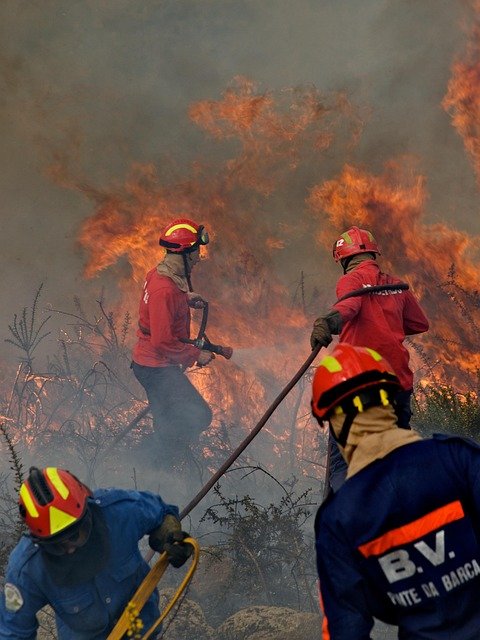Wildfire Monitoring Devices: Advanced Technology for Safety
Wildfire monitoring devices have revolutionized how communities detect, track, and respond to dangerous fire events. These sophisticated technologies combine satellite imagery, drone surveillance, ground-based sensors, and artificial intelligence to provide early warning systems that save lives and property. As climate change increases wildfire risks globally, understanding these monitoring solutions becomes crucial for community preparedness and emergency response effectiveness.

How Advanced Wildfire Monitoring Technology Enhances Community Safety
Advanced wildfire monitoring technology creates comprehensive safety networks that protect communities through multiple detection layers. These systems integrate weather stations, thermal cameras, and atmospheric sensors to continuously monitor fire-prone areas. When conditions indicate potential fire hazards, automated alerts notify emergency services and residents simultaneously.
Modern monitoring networks use machine learning algorithms to analyze historical fire patterns, weather data, and vegetation moisture levels. This predictive capability allows communities to implement preventive measures before fires start, such as controlled burns or evacuation preparations. The technology also tracks fire progression in real-time, enabling precise evacuation timing and resource allocation for maximum safety impact.
The Role of Satellite and Drone Imaging in Early Wildfire Detection
Satellite and drone imaging form the backbone of contemporary wildfire detection systems. Satellites equipped with infrared sensors can detect temperature anomalies as small as a few degrees, identifying potential fire starts within minutes of ignition. These orbital platforms provide continuous coverage over vast geographic areas, making them invaluable for remote region monitoring.
Drone technology complements satellite coverage by offering detailed, low-altitude surveillance of specific areas. Drones equipped with thermal imaging cameras can penetrate smoke cover and operate in conditions too dangerous for human reconnaissance. They provide high-resolution imagery that helps fire teams understand fire behavior, identify safe evacuation routes, and locate trapped individuals or animals.
Key Features of Modern Tools Used to Monitor and Predict Wildfire Behavior
Modern wildfire monitoring tools incorporate several essential features that enhance their effectiveness. Multi-spectral imaging capabilities allow devices to see through smoke and detect heat signatures invisible to human eyes. Weather integration provides real-time wind speed, humidity, and temperature data that influences fire spread patterns.
Geographic Information System (GIS) integration maps fire progression against topographical features, infrastructure, and population centers. Machine learning algorithms analyze this data to predict fire behavior, including likely spread directions and intensity changes. Many systems also feature automated notification capabilities that send alerts to emergency services, government agencies, and affected communities simultaneously.
How Real-Time Data and Alerts Help Communities Respond More Effectively to Wildfires
Real-time data transforms wildfire response from reactive to proactive emergency management. Continuous monitoring provides emergency responders with up-to-the-minute information about fire location, size, and movement patterns. This information enables precise resource deployment, ensuring firefighting equipment and personnel arrive where they are most needed.
Community alert systems integrated with monitoring devices provide residents with accurate evacuation timing and route recommendations. Mobile applications connected to monitoring networks deliver personalized notifications based on individual locations, helping families make informed decisions about when to evacuate. The immediate availability of accurate information reduces panic and improves overall community response coordination.
Innovations in Wildfire Tracking That Support Faster Emergency Responses
Recent innovations in wildfire tracking technology have dramatically improved emergency response times. Artificial intelligence now processes satellite and sensor data in real-time, identifying fire signatures within seconds of detection. Edge computing allows remote monitoring stations to analyze data locally, reducing communication delays that previously slowed response times.
Integration with emergency communication systems enables automatic dispatch of firefighting resources based on predefined criteria. Some advanced systems can even predict optimal helicopter landing zones and safe approach routes for ground crews. These innovations have reduced average response times from hours to minutes in many regions, significantly improving firefighting effectiveness and community safety outcomes.
Wildfire Monitoring Device Cost Comparison
| Device Type | Provider | Key Features | Cost Estimation |
|---|---|---|---|
| Satellite Monitoring | MODIS/NASA | Global coverage, thermal detection | $50,000-$100,000 per community system |
| Drone Surveillance | DJI Matrice | Thermal imaging, real-time video | $15,000-$30,000 per unit |
| Ground Sensors | Campbell Scientific | Weather monitoring, smoke detection | $5,000-$15,000 per station |
| AI Analytics Platform | Descartes Labs | Predictive modeling, alert systems | $20,000-$75,000 annually |
Prices, rates, or cost estimates mentioned in this article are based on the latest available information but may change over time. Independent research is advised before making financial decisions.
The implementation of comprehensive wildfire monitoring systems requires significant investment, but the cost savings in prevented property damage and protected lives make these technologies essential for fire-prone communities. As technology continues advancing, monitoring devices become more affordable and accessible, expanding protection capabilities for communities worldwide. Investment in these systems represents a crucial step toward building resilient communities capable of withstanding increasing wildfire threats in our changing climate.




